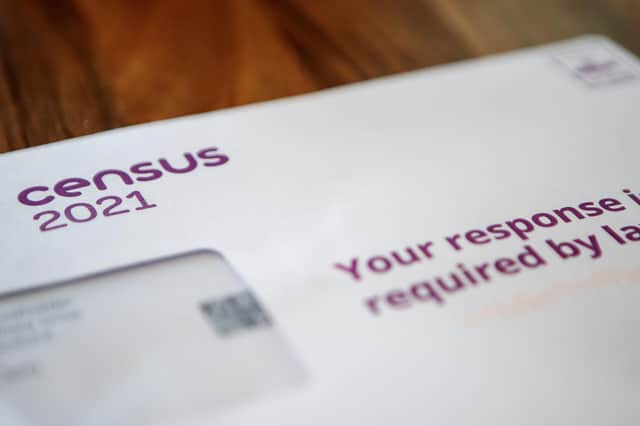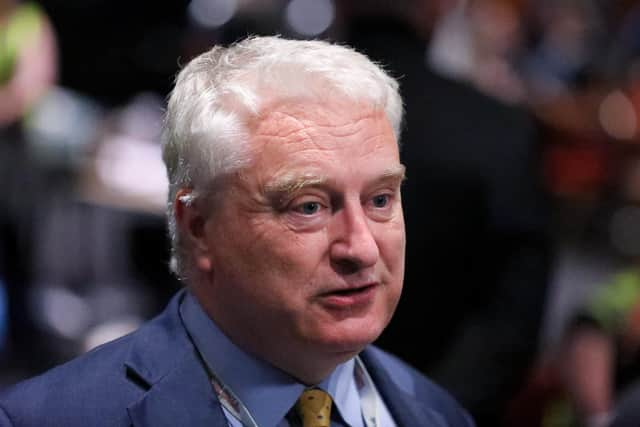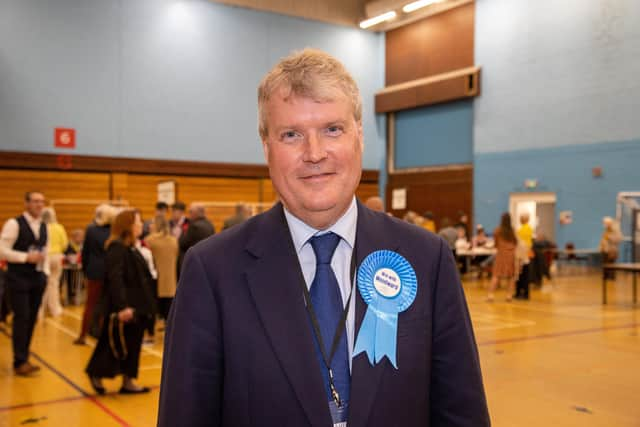Census 2021: Population of Fareham, Gosport and Havant revealed - as Portsmouth loses title of most densely-populated area outside London


Newly-published population figures show the number of people living in the city increased by 1.5 per cent to 208,100, compared to the average of 6.3 per cent for England and Wales.
The slower rate of the rise has also led to the city losing its position of being the most densely populated area outside London, having been overtaken by Luton.


Advertisement
Hide AdAdvertisement
Hide Ad'There will be a calculation that will be made about housing needs,' councillor Gerald Vernon-Jackson said. 'The trouble is the government has changed the rules. It used to be about local need but it's now all done through modelling.
'But this seems to be a good reason to talk to ministers and ask again for the target for Portsmouth to be reduced - they are just not feasible.'
The target set for the city - 17,700 homes over the next 20 years - has prompted the council to writing to the housing secretary requesting it be lowered.
A letter sent by Cllr Vernon-Jackson last year said the island did not have the space to meet this demand and that it would lead to housing being building 'in entirely inappropriate places where there will be significant harm to the environment'.


Advertisement
Hide AdAdvertisement
Hide AdThese concerns have been particularly prominent in the debate about proposed development at Tipner West with councillors' opposition to the creation of a £1bn super peninsula stalling progress on the city's new Local Plan.
Housing targets are based on a government formula which includes a projection of housing need in the area.
The national population increase of more than 3.5m shown in the census results was about 500,000 people fewer than had been projected.
But Cllr Vernon-Jackson said these findings did not mean the city council would not continue looking at ways to increase the number of homes in the city.


Advertisement
Hide AdAdvertisement
Hide Ad'We do have to recognise that there is very clearly a housing need in this city and we have to work to try and help with that,' he added. 'Rents are through the roof - we are hearing this everyday - and we absolutely have a part to play in fixing that.'
Most of Portsmouth’s neighbouring districts have all seen moderate population growth - raising questions about the government’s ‘crazy’ housing targets.
The national census results were published today, revealing population changes in local authority areas over the last decade.
Fareham has seen a 2.6 per cent increase since 2011, something Councillor Sean Woodward, leader of the council described as ‘normal population growth’.
Advertisement
Hide AdAdvertisement
Hide Ad‘It makes you wonder why the government is forcing so many new houses on us,' he said.
‘The housing targets are crazy and this makes them crazier - they are not our target and they do not cater to Fareham's housing need and these figures suggest that Fareham doesn't have a housing need anything like the government is forcing on the borough.
‘The census figures are what we should be using to plan the need for new housing - we are being forced to use very old figures.
‘We now have data which suggests the need for new homes is far lower than we’ve been told and much lower than the government has been insisting on.’
Advertisement
Hide AdAdvertisement
Hide AdEchoing a similar rise in population, Havant borough has grown from 120,684 to 124,200 - a 2.9 per cent increase.
Councillor Alex Rennie, leader of Havant Borough Council said this is in line with housing targets but ‘is still finding hard to deliver’.
‘Havant is a constrained borough. While we have a housing need from the government it is going to be very challenging.
‘There aren't many available sites left in the borough of a sustainable nature for house building.’
Advertisement
Hide AdAdvertisement
Hide AdUnlike neighbouring districts, Gosport’s population has shrunk by 0.9 per cent which was described as ‘negligible’ by Councillor Peter Chegwyn, leader of Gosport Borough Council.
‘It could just be a statistical anomaly. It basically means the population has remained static.
‘We haven't lost vast numbers of housing equally we haven't gained it, Gosport’s population has remained fairly constant over the last 30 years because we’re very limited on land we can build on.
‘There are plans in the pipeline for more housing in Gosport but in my view, we need to sort out the roads, health services and general infrastructure before we can build more housing.’
Advertisement
Hide AdAdvertisement
Hide AdThe Winchester district saw a 9.4 per cent increase from 116,595 in 2011 to 127,500 in 2021, while East Hampshire’s population increased from 115,608 to 125,700 – an 8.7 per cent jump.
The census happens every 10 years and gives a snapshot of the number of people and make-up of households in England and Wales.
The idea is that the data helps organisations such as councils and health bodies decide how to plan and fund public services, such as education and healthcare, as well as housing.
Some of the initial findings from the census are that on Census Day, March 21, 2021 the size of the usual resident population in England and Wales was 59,597,300.
Advertisement
Hide AdAdvertisement
Hide AdThe population of England was 56,489,800, and the population of Wales was 3,107,500.
This was the largest the population has ever been.
More data will be released as time goes by.
The headquarters of the Census 2021 was the Office for National Statistics building in Segensworth Road in Titchfield.
